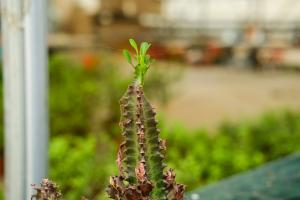Do Tomato Plant Leaves Curl at Night?
Tomatoes are a popular crop, but growing them can be a challenge. One of the things that tomato growers worry about is the curling of tomato plant leaves, particularly at night. This is a common problem, but why does it happen? Let's explore some of the causes and solutions for this issue.
Causes of Curling Tomato Plant Leaves at Night
There are several reasons why tomato plant leaves may curl at night, including:
Temperature drop: When the temperature drops at night, it can cause the leaves to curl up in an attempt to conserve moisture. This can be exacerbated if there is a sudden drop in temperature, or if the temperature fluctuates significantly throughout the day.
Lack of water: If your tomato plants aren't getting enough water, the leaves may curl up as a way to reduce the amount of water lost through transpiration. This is particularly true when the soil is dry and the air is dry as well.
Insect damage: Insects can cause damage to tomato plant leaves, which can lead to curling. Spider mites, for example, can cause yellowing and curling of leaves, while aphids can cause distortion and curling.
Fungal diseases: Certain fungal diseases, such as Fusarium wilt, can cause leaves to curl and wilt. This is often accompanied by yellowing and browning of leaves as well.
Solutions for Curling Tomato Plant Leaves at Night
If your tomato plant leaves are curling at night, there are several things you can do to help resolve the issue:
Water your tomato plants regularly: Regular watering can help ensure that your tomato plants have enough moisture to reduce the likelihood of leaves curling up. Water the plants deeply and consistently, making sure that the soil doesn't become too dry or too waterlogged.
Protect your plants from sudden temperature changes: Cover your plants with blankets or row covers on chilly nights to help protect them from sudden drops in temperature. This can also help to prevent moisture loss from the leaves.
Treat insect infestations: If your tomato plants are suffering from insect infestations, treating them can help to remove the pests and prevent further damage. There are various chemical and non-chemical treatments available, including neem oil, insecticidal soap, and beneficial insects such as ladybugs and lacewings.
Treat fungal diseases: If you suspect that your tomato plants are suffering from fungal diseases, it's important to act quickly to prevent the spread of the disease. Remove any affected leaves or plants and treat with appropriate fungicides or natural remedies.
Conclusion
Tomato plant leaves can curl at night due to a variety of reasons, including temperature drops, lack of water, insect infestations, and fungal diseases. Taking care of your plants with regular watering, protection from temperature fluctuations, and proper pest and disease control can help to reduce the likelihood of leaf curling and ensure a healthy crop of tomatoes.

 how many times do yo...
how many times do yo... how many planted tre...
how many planted tre... how many pine trees ...
how many pine trees ... how many pecan trees...
how many pecan trees... how many plants comp...
how many plants comp... how many plants can ...
how many plants can ... how many plants and ...
how many plants and ... how many pepper plan...
how many pepper plan...






























